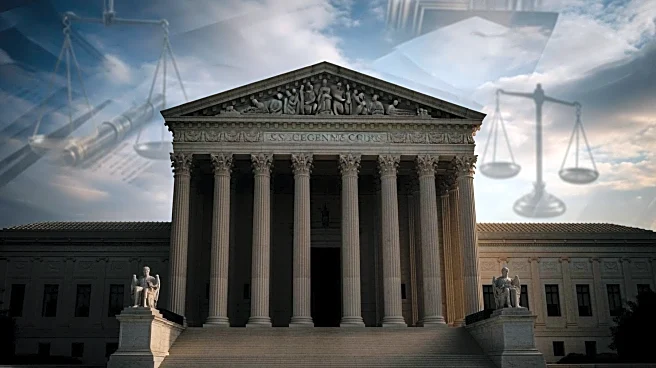What's Happening?
The Sixth Circuit Court has contributed to a growing division among U.S. courts regarding the liability of freight brokers in personal injury cases. The court ruled that broker negligence related to motor
vehicle safety falls under state jurisdiction, diverging from other circuits that believe federal law preempts state claims. This legal disagreement centers on whether federal protections for freight brokers extend to shielding them from state-level personal injury claims. The Sixth Circuit's decision in the case of Cox highlights this split, which may prompt the Supreme Court to address the issue. Currently, the federal law's protections do not apply to passenger carriers, adding another layer of complexity to the legal landscape.
Why It's Important?
This development is significant as it affects the legal responsibilities and potential liabilities of freight brokers across the United States. The circuit split creates uncertainty for brokers, who may face different legal standards depending on the jurisdiction. This inconsistency can impact the logistics and transportation industries, potentially leading to increased insurance costs and operational challenges. If the Supreme Court decides to resolve this split, it could establish a uniform standard, providing clarity and stability for businesses involved in freight brokerage. The outcome could also influence state-level regulatory approaches to motor vehicle safety and broker accountability.
What's Next?
The Supreme Court may soon be called upon to resolve this circuit split, which would have far-reaching implications for the freight brokerage industry. Stakeholders, including legal experts and industry representatives, are likely to monitor developments closely. A Supreme Court decision could lead to changes in how freight brokers manage risk and liability, potentially prompting legislative or regulatory adjustments at both federal and state levels. Until then, brokers must navigate a complex legal environment, balancing compliance with varying state laws while anticipating potential changes in federal oversight.











